 |
| 120mm home-made refractor |
120mm home-made refractor: First telescope. I bought the lens for only $7 in Shanghai back in 1994. The objective is a single piece of glass, with diameter D=120mm (4.5") and focal length F=1500mm. Star appears as colored disk in it. I made the tube from card board. No mount. Crude as it was, the telescope revealed many interesting objects to me for the first time. Great fun.
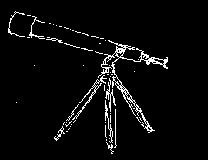 |
| Panda F700ED |
Panda F700ED: Second telescope. China made achromatic refractor, D=60mm (2.4"), F=700mm. Alt-azimuth mounting. It's a small telescope, but the optical quality is decent given its $80 price.
 |
| Panda 7x50 Binoculars |
Panda 7x50 Binoculars: D=50mm, 7x. Good optics. Made in China. $30.
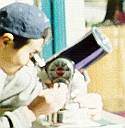 |
| Questar |
Questar: Maksutov Telescope, D=89mm (3.5"), F=1300mm. Borrowed from Carnegie Mellon University Astronomy Club. Portable. Optical quality is good. Usually use a 16mm EFL eyepiece.
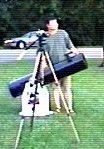 |
| Celestron Starhopper 8" Dobsonian |
Celestron Starhopper 8" Dobsonian: 8"(20cm) Newtonian reflector, bought in Pittsburgh for $500. Comes with a 25mm MA eyepiece. With (and only with) an eyepiece, images may be ROTATED but NOT MIRRORED. With the 25mm eyepiece, the FOV is 1 degree; with 9mm Tele Vue eyepiece, FOV is about 24'.
 |
| For Pittsburghers: this is the view of Gulf Tower in downtown, as seen from Shenley Park, Oakland, in the Dob with the 25mm eyepiece. |
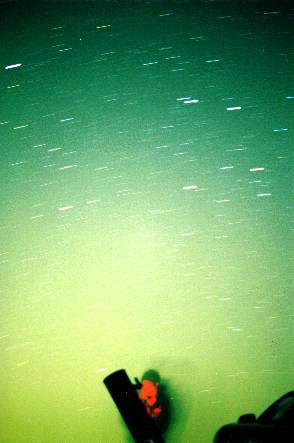 |
| Under starry sky |
That's me in Greene County, Pittsburgh with the 8" Dob telescope. Olympus OM-1, 50mm lens at f1.8. Kodak Max 400 film. 5 minutes exposure on a tripod. 2000/4/29 22:17 EDT. In case you're curious: The bright star at upper left is Spica (alpha Virginis), Corvus is at right.
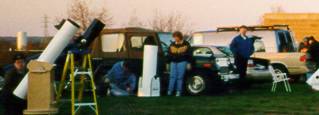 |
| AAAP star party |
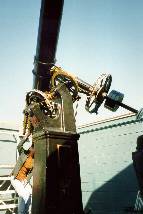 |
| 11" Brashear refractor |
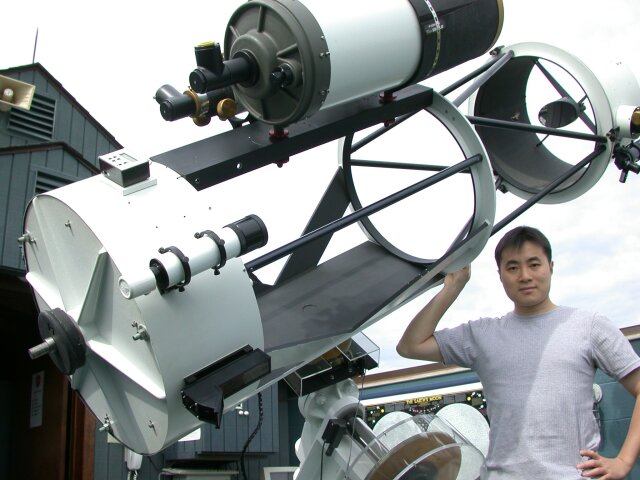 |
| 20" Manka reflector |
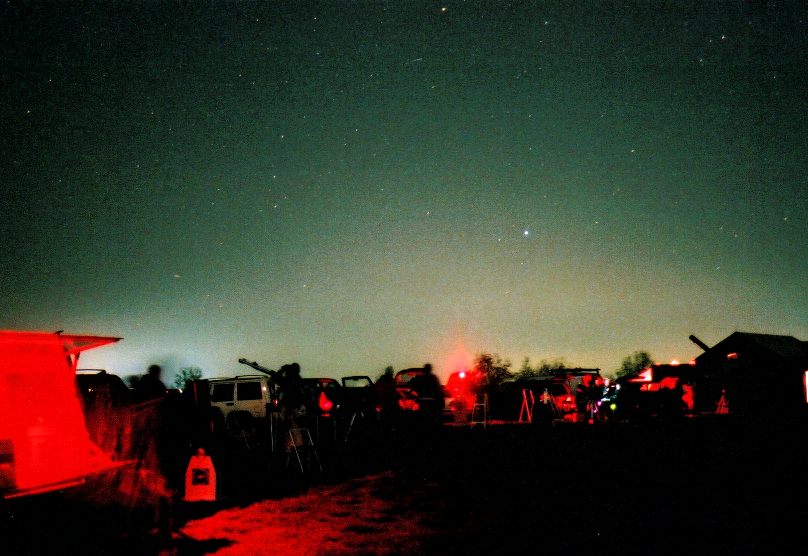 |
| AAAP star party at Wagman Observatory. The brightest rising star is Vega (alpha Lyrae). Light pollution is evident along the north horizon. 2001/4/27 21:54 EDT 30 second exposure on a tripod. 35mm lens f/2.8. Fuji 800 negative film. |
Go to star parties! There you can feel how good larger telescopes are. For Pittsburghers, there are the 11" Brashear refractor, and the 20" Manka reflector, both at Wagman Observatory, with public access during star parties.
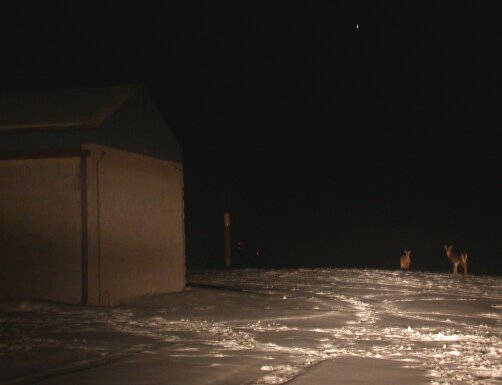 |
| Wagman observatory in winter. 2003/1/30 |
Deers forage on snow covered hill top at Wagman observatory. The star is Jupiter. Photo with Nikon 995.
Cameras used: Olympus OM-1, Sony CCDTRV43 Camcorder, Nikon coolpix 995.
To hook Nikon 995 to a telescope, I use a Scopetronix 18mm eyepiece / adaptor which is an eyepiece itself, but can be screwed to 995's 28mm len thread. The fields is almost vignette-free even at the widest zoom. With the Manka scope, this setup gives a frame of 20'x15' (widest zoom); with 5"/f5 Jaegers scope, 1 degree x 1 degree 23'.












